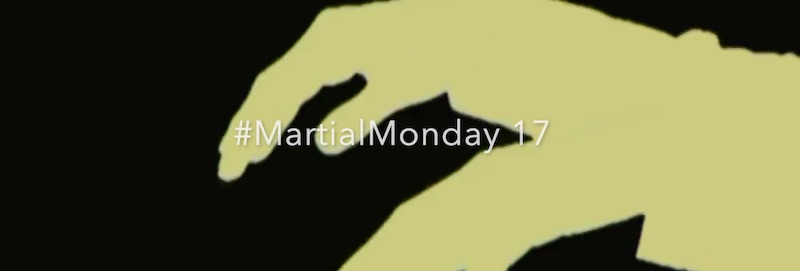Push! #Martialmonday is back with one from the archives. The next movement in the form is the „push“. It can be trained as an endless circle, using a simple exercise.
Partner Exercise for Push
One partner pushes the shoulders – the other neutralises. Then the roles are changed.

Working with the changes in the circle
We do not just „mill around“ with our partner. The changes have to be made clear.
One is active (pushing) – the other is passive (neutralizing). Our push goes upwards and outwards – uprooting our partner (externally) and organising our body against the floor (internally). The neutralising partner does not change the direction of the push at all. S/he does not feel to change the partner’s action – s/he follows, as if it was a strong blow aimed at the shoulders and s/he wants to get out of the way.
This is not done without proper protection. While the active partner is pushing, the hands and arms of the neutralising partner are left at the same height, taking over the hands of the pushing partner from the shoulders. The rest of the body drops simultaneously.
These two movements go back and forth between the partners, the roles changing after every action. The endless circle is thus the result of interaction, in this case of a series of interchanged one-directional pushes. It is not the movement in itself.
Fast forward – self-check test
If you are not sure if you are doing the exercise correctly, try to do it fast for a change.
- Firstly, this should prevent any acting „as if“ – your partner should be really pushing, also in slow mode. It is not an exercise in simulation.
- Secondly, it will prevent „heat seeking“ of the pushing partner. In slow motion, the partner is seduced to follow your neutralisation – something that cannot be achieved in a full speed blow.
- Thirdly, some faster rounds do prevent the passive partner from manipulating the execution of the push, taking it somewhere and giving it back (which might be a useful exercise in bodywork, but is useless in the context of pushing hands as a preparatory exercise for free fighting).
Basic skills: Disconnecting the shoulders
One basic requirement for this exercise is the ability to disconnect the arms, respectively the shoulder girdle, from the torso, so that both may move independently.
This ability may be trained in the form – it is hidden in the transition movement in the form, when the arms still travel backwards, while the body already changed the direction into the preparation of the push.





